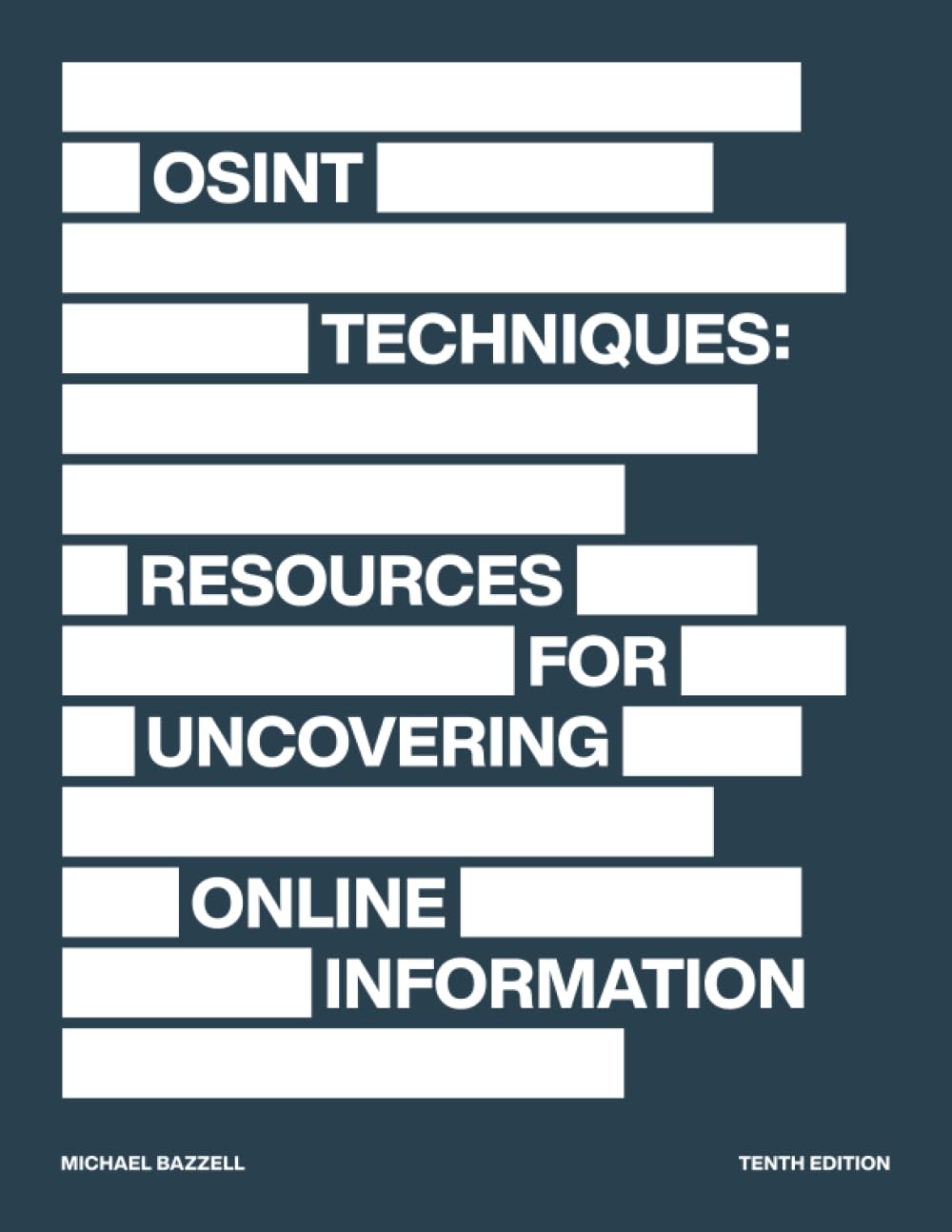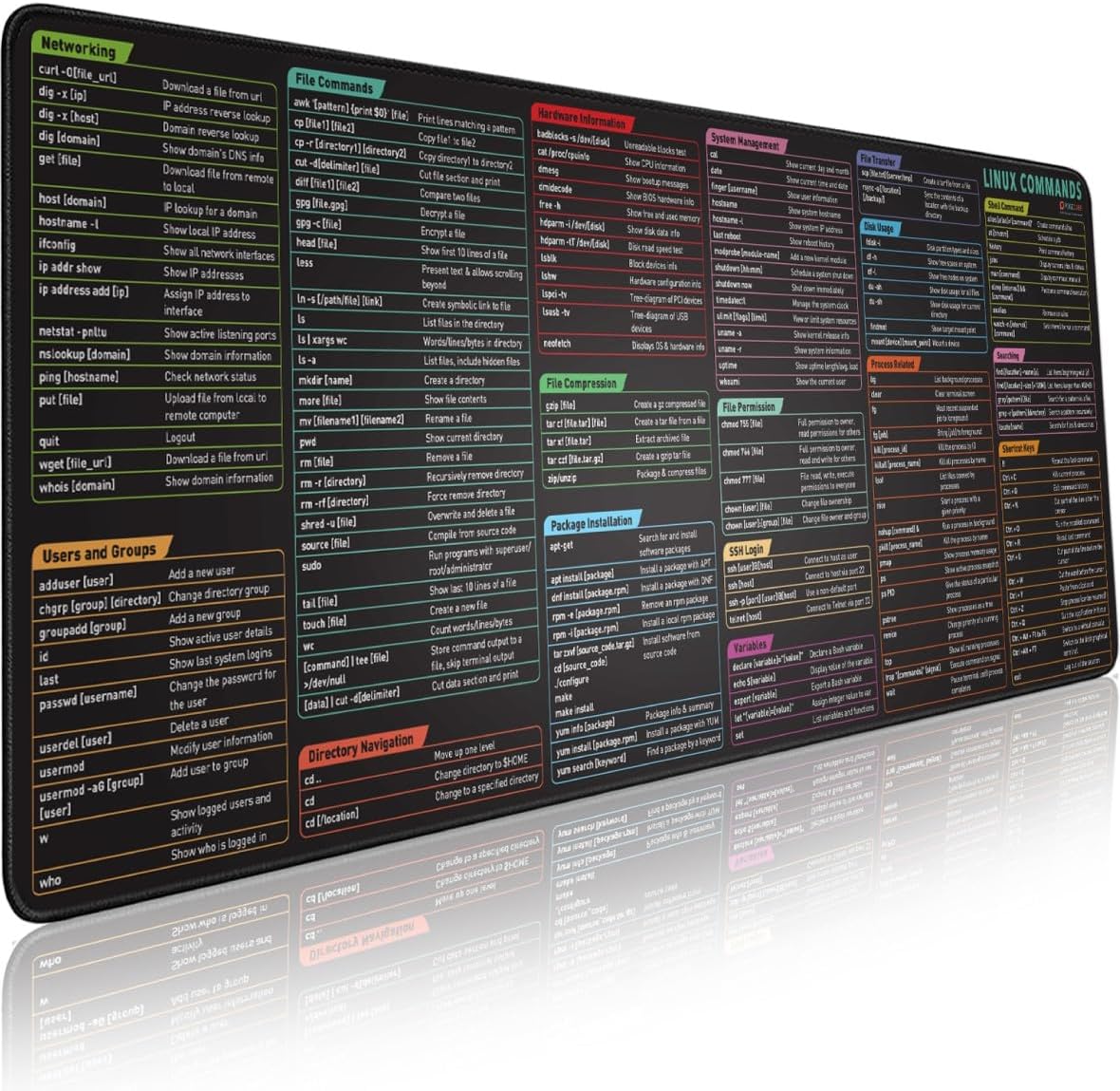The Essential Skills for Successful Bug Hunters

Introduction to Essential Skills for Aspiring Bug Bounty Hunters
Welcome to the dynamic and expansive world of bug bounty hunting—a realm where the confluence of technical savvy, strategic thinking, and unwavering resilience can unlock a treasure trove of cybersecurity achievements. In this comprehensive guide, we embark on a journey to explore the foundational skills and tools indispensable for carving out a successful path in the bug bounty landscape. As the digital frontier continues to evolve at a breakneck pace, the demand for skilled bug bounty hunters who can adeptly navigate this terrain has never been higher.
This article serves as a beacon for those ready to plunge into the depths of bug bounty hunting, illuminating the critical technical proficiencies, from web technologies to network security, that form the bedrock of a bug hunter’s toolkit. Moreover, we delve into the soft skills that often delineate success in this field—problem-solving prowess, the art of persistence, and the finesse of effective communication. These are the skills that empower aspiring hunters to not only identify and exploit vulnerabilities but to do so in a way that enriches the cybersecurity community and safeguards the digital ecosystem.
As we unpack the essential toolkit every burgeoning bug bounty hunter must cultivate, our guide aims not only to educate but to inspire. Whether you’re embarking on your first bug bounty voyage or looking to refine your existing skills for enhanced success, this article is your compass—pointing you toward the methodologies, mindsets, and maneuvers that define the elite in the field. Join us as we navigate the bug bounty seas, charting a course through the technical challenges and collaborative opportunities that await in the quest to secure our online world.
Embarking on this journey promises personal and professional growth and the chance to contribute to a safer digital environment for all. Through the lens of bug bounty hunting, we invite you to explore the intersection of curiosity, ethics, and technology, where every discovery advances your expertise and fortifies the defenses of the digital domains we all rely on. Welcome to “The Essential Skills for Successful Bug Hunters: Building Your Cybersecurity Toolkit”—your gateway to mastering the art and science of bug bounty hunting.
Technical Skills
Understanding of Web Technologies
In the intricate world of bug bounty hunting, a profound understanding of web technologies is not just beneficial—it’s essential. Web applications are the lifeblood of the internet, serving as the interface between users and the vast array of services available online. As such, they are a prime target for malicious actors. This section aims to demystify the core components of web applications, highlight common vulnerabilities, and introduce the tools that can aid in their identification and exploitation.
The Building Blocks of Web Applications
Web technologies encompass the protocols, languages, and tools that work together to deliver the web experiences we interact with daily. At the foundation of any web application are:
- HTML (HyperText Markup Language): The skeleton that structures web content. Understanding HTML is crucial for identifying injection points where malicious code could be executed.
- CSS (Cascading Style Sheets): Responsible for the visual presentation of web pages. While not directly related to most security vulnerabilities, a good grasp of CSS is helpful for understanding how malicious content could be disguised.
- JavaScript: The muscles that make websites interactive. JavaScript is pivotal in understanding client-side vulnerabilities, such as Cross-Site Scripting (XSS).
- Server-side Technologies: These include languages and frameworks like PHP, Ruby on Rails, and ASP.NET, which generate the dynamic content users interact with. Familiarity with these technologies is key to understanding server-side vulnerabilities, such as SQL Injection (SQLi) and Remote Code Execution (RCE).
Common Vulnerabilities
Each layer of web technology introduces potential vulnerabilities:
- HTML & CSS: While inherently less prone to security issues, malicious CSS or HTML can be used in phishing attacks or to execute Cross-Site Scripting (XSS) when improperly handled by JavaScript or server-side technologies.
- JavaScript: XSS vulnerabilities are common in applications that fail to properly sanitize user input. This can allow attackers to inject malicious scripts that can steal cookies, hijack sessions, or redirect users to malicious sites.
- Server-side Technologies: Vulnerabilities here can be particularly severe. SQL Injection allows attackers to manipulate backend databases, while RCE vulnerabilities can enable a complete server takeover.
Tools for Testing and Exploitation
To identify and exploit these vulnerabilities, bug bounty hunters rely on a suite of tools:
- Browser Developer Tools: Built into every modern web browser, these tools allow you to inspect HTML, CSS, and JavaScript, making them invaluable for understanding how a web application operates and for initial vulnerability assessment.
- Proxy Tools (e.g., Burp Suite, OWASP ZAP): These tools let you intercept and modify requests and responses between your browser and the web server, facilitating the identification of input validation issues and other vulnerabilities.
- Automated Scanners: While not a substitute for manual testing, automated scanners can quickly identify known vulnerabilities in web applications, saving time and helping to prioritize areas for deeper investigation.
Grasping how web technologies interlock to create the web applications we use daily is the first step in identifying and exploiting vulnerabilities within them. As you delve deeper into each technology, remember that the goal is to find vulnerabilities and understand their root cause—knowledge critical for developing effective exploits and, ultimately, secure applications.
Network Security Fundamentals
The backbone of all Internet communications lies in the complex and structured world of network security. Understanding how data travels across networks, the protocols governing these transmissions, and the vulnerabilities that can be exploited is crucial for any aspiring bug bounty hunter. This section delves into the basics of network security, highlighting the critical role of TCP/IP protocols, the importance of various ports, and the use of essential tools for network reconnaissance.
TCP/IP Protocols: The Foundation of Internet Communications
- TCP/IP (Transmission Control Protocol/Internet Protocol): These protocols are the lifeblood of internet communications, dictating how data is transmitted across networks. TCP ensures reliable data transmission between clients and servers, ordering data packets and retransmitting lost packets. IP deals with routing the packets to their intended destination.
- Understanding Protocol Layers: The TCP/IP model consists of four layers: the link layer, the internet layer, the transport layer, and the application layer. Each layer has a specific role in handling, transmitting, and receiving data. A solid grasp of these layers is essential for identifying potential points of vulnerability in network communications.
The Significance of Ports
- What Are Ports? Ports are endpoints in the network communication process. They are associated with IP addresses to uniquely identify transactions across the network. Understanding the function of different ports is crucial for network security analysis.
- Common Ports and Their Vulnerabilities: Well-known ports like 80 (HTTP) and 443 (HTTPS) are standard for web traffic. Ports like 22 (SSH) and 21 (FTP) are used for remote administration and file transfers, respectively. Each port, based on its associated service, can have specific vulnerabilities. For instance, unsecured FTP (port 21) can expose sensitive data to interception.
Tools for Network Reconnaissance
- Nmap: Short for Network Mapper, Nmap is an open-source tool for network discovery and security auditing. It allows you to identify devices on a network, discover open ports, and determine what services and versions are running on those ports. Nmap is indispensable for initial reconnaissance in preparation for deeper vulnerability assessment.
- Wireshark: Wireshark is a network protocol analyzer that lets you capture and interactively browse the traffic running on a computer network. It’s essential for examining the finer details of network communications, understanding the structure of different protocols, and identifying anomalies that could indicate security issues.
Using tools like Nmap and Wireshark, bug bounty hunters can perform detailed reconnaissance, uncovering vital information about target networks that can lead to discovering exploitable vulnerabilities. This reconnaissance phase is critical as it lays the groundwork for targeted attacks on network services, applications, and protocols.
Understanding network security fundamentals is not just about knowing how to use tools; it’s about comprehending the underlying principles of network communications and the security implications of different configurations and protocols. This knowledge is a powerful tool in the bug bounty hunter’s arsenal, enabling them to identify and exploit weaknesses in network infrastructure.
Familiarity with Common Vulnerabilities
A successful bug bounty hunter must have a keen eye for spotting vulnerabilities that could compromise web application security. This expertise begins with understanding the most prevalent security weaknesses, as identified in resources like the OWASP Top 10, a crucial guide that outlines the ten most critical web application security risks. In this section, we’ll delve into some of these common vulnerabilities, such as SQL Injection (SQLi), Cross-Site Scripting (XSS), and Cross-Site Request Forgery (CSRF), explaining how they can be exploited and, importantly, how they can be mitigated.
SQL Injection (SQLi)
SQL Injection attacks occur when an attacker inserts or ” injects” a malicious SQL query into the input data from the client to the application. This is often possible when an application does not properly sanitize the input fields, allowing attackers to manipulate the database behind the web application. Successful SQLi attacks can lead to unauthorized access to sensitive data, data manipulation, and even full database compromise.
- Mitigation: Use prepared statements and parameterized queries, employ stored procedures, and implement proper input validation to prevent SQLi attacks.
Cross-Site Scripting (XSS)
XSS vulnerabilities are exploited when an attacker injects malicious scripts into content that is then served to a user. Unlike SQLi, which attacks the application’s database, XSS targets the application’s users. The attacker’s script executes in the victim’s browser, leading to data theft, session hijacking, and defacing the web page.
- Mitigation: Implement content security policies, validate and sanitize all user inputs, and encode data on output to prevent XSS attacks.
Cross-Site Request Forgery (CSRF)
CSRF attacks trick the victim into executing unwanted actions on a web application in which they are authenticated. By exploiting a site’s trust in a user’s browser, an attacker can send unauthorized commands to the user, leading to actions like changing email addresses and passwords or even transferring funds without the user’s consent.
- Mitigation: Use anti-CSRF tokens, implement the same-site cookie attribute, and ensure that state-changing requests are only accepted over POST requests to combat CSRF.
Understanding these vulnerabilities is just the beginning. As technology evolves, so too do the methods by which applications can be compromised. Staying informed about the latest security research, understanding the fundamentals of how different vulnerabilities are exploited, and knowing how to mitigate these risks are all crucial components of the bug bounty hunter’s toolkit. Remember, the goal of identifying these vulnerabilities is to earn bounties and contribute to making the digital world a safer place for everyone.
Proficiency in Security Tools and Platforms
Proficiency with various security tools and platforms is indispensable in a bug bounty hunter’s arsenal. These tools not only aid in discovering vulnerabilities but also in effectively reporting them to ensure they are understood and can be remediated by the responsible parties. This section provides guidance on utilizing key reconnaissance tools, vulnerability scanners, proxy tools such as Burp Suite, and reporting platforms like HackerOne and Bugcrowd, which are fundamental in the bug bounty hunting process.
Reconnaissance Tools
Before diving into the deep end, a bug bounty hunter must first understand the surface they’re diving into. Reconnaissance tools are essential for gathering information about the target, helping map out the application’s structure, and identifying potential entry points.
- Nmap: A powerful network scanner that lets you discover devices and services on a network, helping you understand the landscape you work within.
- Sublist3r or Amass: Tools for enumerating subdomains of websites, uncovering areas that may be less fortified or forgotten.
Utilizing these tools provides a foundational understanding of the target, setting the stage for more targeted attacks.
Vulnerability Scanners
Automated vulnerability scanners can quickly identify known security weaknesses in web applications, providing a valuable starting point for further manual exploration.
- OWASP ZAP (Zed Attack Proxy): An open-source web application security scanner that can help identify vulnerabilities such as SQL injection and XSS.
- Nikto: A web server scanner that tests for thousands of potential issues on web servers, offering a broad sweep for common vulnerabilities.
While invaluable, these scanners should complement, not replace, manual testing, as they may miss context-specific vulnerabilities or produce false positives.
Proxy Tools
Proxy tools like Burp Suite act as intermediaries between the hacker’s browser and the web servers, allowing for the traffic’s interception, analysis, and modification. This is crucial for understanding how applications handle data and identifying vulnerabilities.
- Burp Suite: This toolkit offers a suite of tools for web application security testing, including an interceptor, repeater, sequencer, and decoder. Its intuitive interface and powerful features make it a favorite among bug bounty hunters.
Mastering proxy tools enables hunters to craft custom attacks and precisely analyze responses from the web application, often leading to the discovery of critical vulnerabilities.
Reporting Platforms
Once a vulnerability is identified, it must be reported effectively to be fixed. Platforms like HackerOne and Bugcrowd provide structured environments for submitting bug reports, offering templates and guidelines to ensure the necessary information is conveyed.
- HackerOne and Bugcrowd: These platforms facilitate the communication between hackers and companies, ensuring that vulnerabilities are responsibly disclosed. They provide resources and support to help hunters create comprehensive, actionable reports.
Effective use of these platforms helps address vulnerabilities and builds a reputation within the community as a skilled and responsible bug bounty hunter.
The Wrap-Up:
Achieving proficiency in these tools and platforms is a journey of continuous learning and practice. As you grow in your bug bounty-hunting career, these resources will serve as the backbone of your toolkit, enabling you to uncover vulnerabilities and contribute to the security of the digital world. Remember, your mindset is the most powerful tool at your disposal: stay curious and ethical, and always be willing to learn and adapt.
Soft Skills
Critical Thinking and Problem-Solving
The essence of bug bounty hunting lies in the technical skills and tools at one’s disposal and the ability to approach problems with a methodical and innovative mindset. Critical thinking and problem-solving are the keystones that transform a good bug hunter into a great one. This section explores strategies to enhance your problem-solving skills, enabling you to dissect complex issues, hypothesize potential vulnerabilities, and rigorously test these hypotheses to uncover and report bugs effectively.
Breaking Down Complex Issues
It can be daunting to confront a complex web application or network system. The first step in tackling this challenge is to break down the issue into manageable components.
- Segmentation: Start by segmenting the application into its core functionalities and components. Look at authentication mechanisms, data input forms, user interfaces, and API endpoints as separate entities.
- Prioritization: Identify which components are likely to be more vulnerable or have a higher impact if compromised. Focus your efforts on these areas.
This approach makes the task less overwhelming and allows for a more focused and effective testing process.
Hypothesizing Potential Vulnerabilities
Once you understand the application’s components, the next step is to hypothesize potential vulnerabilities. This requires a mix of technical knowledge and creativity.
- Leverage Known Vulnerabilities: Use your knowledge of common vulnerabilities (like those listed in the OWASP Top 10) as a starting point for what could potentially be exploited in the application.
- Think Like an Attacker: Consider how an attacker might exploit the functionality. Asking “What if?” questions can help you identify security gaps. For example, “What if the user input is not sanitized? Could that lead to an XSS vulnerability?”
Testing Those Hypotheses
Once you’ve identified potential vulnerabilities, the next step is to test your hypotheses. This is where your technical skills and tools come into play.
- Use Proxy Tools: Tools like Burp Suite can be used to manipulate requests and responses to test for vulnerabilities such as SQL injection or XSS.
- Automate When Possible: While manual testing is crucial, automated scanners can be used to test broad areas for known vulnerabilities. This can save time and help you focus on more complex issues that require a hands-on approach.
- Document Your Findings: Keep detailed notes of your testing process, including what you tested, how you tested it, and the results. This documentation is invaluable for reporting vulnerabilities and for your personal learning.
Embracing a Growth Mindset
Problem-solving in bug bounty hunting is as much about persistence and learning from failure as it is about technical acumen. Not every hypothesis will lead to a vulnerability, and not every vulnerability will be significant. Embrace these challenges as opportunities to learn and grow.
- Learn from the Community: Share your challenges and learnings with the bug bounty community. Participating in forums, reading other hunters’ reports, and engaging in discussions can provide new insights and strategies.
- Reflect and Adapt: After each bug hunt, reflect on what worked, what didn’t, and how to improve. This reflection is crucial for developing your problem-solving skills and adapting your strategies for future success.
Developing a strong critical thinking and problem-solving foundation will significantly enhance your effectiveness as a bug bounty hunter. By approaching problems methodically, thinking creatively, and embracing the challenges of the hunt, you’ll uncover more vulnerabilities and contribute to a safer digital world.
Patience and Persistence
The journey of a bug bounty hunter is paved with challenges and moments of frustration. It demands technical skill and a deep reservoir of patience and persistence. Cultivating these qualities is crucial for enduring the sometimes fruitless searches and the inevitable obstacles that come with uncovering vulnerabilities. Here, we aim to offer encouragement and practical tips for maintaining focus and resilience, ensuring that you remain steadfast on your bug bounty-hunting journey.
Embracing the Marathon Mindset
Bug bounty hunting is more akin to a marathon than a sprint. Success is not always immediate, and the process can be as rewarding as the outcome.
- Set Realistic Expectations: Understand that not every exploration will lead to a groundbreaking discovery. Recognize and celebrate small victories and learnings along the way.
- Pace Yourself: Allocate time for breaks and diversions. Continuous work without rest can lead to burnout, diminishing your efficiency and creativity.
Developing a Routine for Success
A consistent routine can help manage the extensive hours spent on research and testing, turning them into a sustainable part of your daily life.
- Dedicated Work Time: Establish a consistent schedule for your bug-hunting activities. A routine can help you manage time and ensure you work when you’re most productive.
- Breaks Are Essential: Incorporate short breaks to clear your mind and reduce fatigue. Techniques like the Pomodoro Technique can be particularly effective in maintaining high levels of focus over long periods.
Dealing with Frustration and Setbacks
Frustration is an inevitable part of the bug-hunting process. How you deal with these moments can significantly impact your progress and mental health.
- Step Away When Needed: If you’re hitting a wall, take a step back. Sometimes, distance can provide a new perspective and help identify solutions you may have overlooked.
- Learn from Failures: Each setback is an opportunity to learn. Analyze what went wrong, and use these insights to refine your strategies and techniques.
Staying Motivated
Maintaining motivation can be challenging, especially when results seem elusive. Keeping your end goals in sight can help in sustaining your drive.
- Celebrate Progress: Acknowledge and celebrate every step forward, no matter how small. Whether it’s mastering a new tool or understanding a complex vulnerability, every bit of progress is a step toward your larger goal.
- Connect with the Community: Engaging with the bug bounty community can provide a much-needed boost. Sharing experiences, challenges, and successes with like-minded individuals can reinvigorate your enthusiasm and provide fresh motivation.
Persistence Pays Off
Remember, persistence is key. Many successful bug bounty hunters have stories of periods where they found nothing, followed by breakthroughs that came from persistence and continued effort.
- Set Long-Term Goals: Keep your long-term goals in mind. Whether it’s achieving a certain level of recognition, earning a specific amount, or contributing to the security of widely used software, these goals can serve as your north star.
- Adapt and Overcome: Be prepared to adapt your strategies and learn new skills. The cybersecurity landscape is ever-changing, and flexibility can open new avenues for discovery.
Cultivating patience and persistence is about more than just enduring; it’s about thriving in the face of challenges and emerging stronger with each obstacle overcome. Both highs and lows will mark your journey in bug bounty hunting, but with resilience and a steadfast commitment to your goals, you’ll find the path to success.
Communication Skills
Effective communication is a pivotal skill in a bug bounty hunter’s arsenal. The ability to clearly and concisely convey the details of your findings ensures that vulnerabilities are understood and addressed promptly and establishes your reputation as a professional in the field. This section delves into best practices for crafting comprehensive bug reports and offers tips for fostering collaborative problem-solving with peers and security teams.
Writing Clear, Concise, and Informative Bug Reports
A well-written bug report is your primary tool for conveying the significance and details of a vulnerability. Here are key elements to include for clarity and efficiency:
- Title: Start with a descriptive title that gives an immediate overview of the issue.
- Summary: Briefly summarize the vulnerability, including the potential impact. This helps the reader grasp the severity and nature of the issue at a glance.
- Reproduction Steps: Provide a step-by-step guide on reproducing the vulnerability, ensuring that someone without prior knowledge of the issue can follow along.
- Proof of Concept: Include any scripts, URLs, screenshots, or videos that demonstrate the exploit. Make sure these are clear and accurately showcase the vulnerability.
- Mitigation Suggestions: While it’s not always required, suggesting possible fixes can be helpful and demonstrate a deeper understanding of the issue.
- Responsible Disclosure: Follow the principles of responsible disclosure, giving organizations the time and information they need to fix the issue before it is made public.
Enhancing Collaborative Problem-Solving
Collaboration with peers and security teams is often necessary to address complex vulnerabilities. Effective communication is key to successful collaboration:
- Be Open and Respectful: Approach discussions with an open mind and respect for others’ perspectives. Remember, the goal is to improve security, not to prove someone wrong.
- Use Clear and Accessible Language: Avoid overly technical jargon when possible, especially when communicating with individuals who may not have a technical background.
- Active Listening: Pay attention to feedback and questions from the security team or peers. Active listening can lead to a deeper understanding of the issue and more effective solutions.
- Follow-Up: After submitting a report, be available for any follow-up questions or requests for additional information. Prompt responses can expedite the resolution process.
Tools and Platforms for Communication
Leverage tools and platforms that facilitate effective communication:
- Bug Bounty Platforms: Platforms like HackerOne and Bugcrowd have built-in messaging systems for direct communication with security teams.
- Collaboration Tools: Tools such as Slack, Discord, or email can be used for ongoing discussions with peers or when working together on finding or exploiting vulnerabilities.
Continuous Improvement
Finally, view each interaction as an opportunity to improve your communication skills. Solicit feedback on your reports from peers or mentors, and take note of which approaches lead to efficient resolutions. Over time, you will refine your ability to convey complex information clearly and effectively, enhancing your success as a bug bounty hunter.
Effective communication is about more than just exchanging information; it’s about building relationships, fostering trust, and working collaboratively toward the common goal of securing the digital landscape. By honing your communication skills, you become a better bug bounty hunter and a valued member of the cybersecurity community.
Continuous Learning
In the ever-evolving landscape of cybersecurity, pursuing knowledge is both a necessity and a passion for successful bug bounty hunters. The technologies, threats, and defenses are constantly in flux, requiring a commitment to ongoing education to stay ahead of the curve. This section highlights resources for keeping abreast of the latest security research, tools, and techniques and offers advice on cultivating a mindset of lifelong learning.
Staying Updated with Security Research
The cybersecurity community is vibrant and prolific, with countless researchers sharing their findings, vulnerabilities, and exploits. Engaging with this wealth of knowledge is crucial for staying informed:
- Security Blogs and Websites: Follow reputable blogs and websites that regularly post about cybersecurity trends, vulnerability disclosures, and research papers. Sites like The Hacker News, Krebs on Security, and security company blogs are great starting points.
- Academic Journals: For those inclined towards the technical depth, academic journals in the field of cybersecurity publish peer-reviewed papers on the latest research and developments.
- Conferences and Webinars: Attend conferences like DEF CON, Black Hat, and RSA Conference, either in-person or virtually. These events cover the latest in security and provide networking opportunities with leading experts.
Leveraging Online Learning Platforms
Online learning platforms offer structured pathways to acquiring new skills and deepening existing knowledge:
- Cybersecurity Courses: Platforms like Coursera, Udemy, and edX offer courses on various aspects of cybersecurity, from beginner to advanced levels.
- Interactive Learning: Sites like Hack The Box, TryHackMe, and PortSwigger Web Security Academy provide hands-on labs and challenges that simulate real-world vulnerabilities and attack scenarios.
Participating in Communities
The bug bounty and broader cybersecurity community are incredibly supportive, with experienced professionals often eager to share knowledge:
- Forums and Social Media: Join forums and social media groups dedicated to cybersecurity and bug bounty hunting. Platforms like Twitter, Reddit (e.g., r/netsec), and Discord servers are lively places for discussion and learning.
- Mentorship: Seek out mentorship opportunities. Many seasoned professionals are open to guiding newcomers. Mentorship can provide personalized insights and accelerate your learning.
Adopting a Mindset of Lifelong Learning
The key to continuous learning is the recognition that there’s always something new to discover:
- Curiosity: Allow your curiosity to drive your exploration of new technologies and vulnerabilities. Question how systems work and why they fail.
- Adaptability: Be prepared to adapt your focus as new technologies emerge and old ones become obsolete. Flexibility is your asset in navigating the cybersecurity field.
- Reflection: Regularly reflect on your learning journey. Identify areas for improvement and set personal goals to tackle new challenges.
Continuous learning in cybersecurity is not just about staying relevant; it’s about fostering a deep understanding of the digital world’s complexities and vulnerabilities. By dedicating yourself to lifelong education, you enhance your capabilities as a bug bounty hunter and contribute to the broader mission of securing the digital frontier against emerging threats.
Embracing the Bug Bounty Hunter’s Path
The journey of a bug bounty hunter is indeed both challenging and rewarding, navigating through the complexities of cybersecurity with a toolkit enriched by technical knowledge and fortified by essential soft skills. As we conclude our guide, it’s clear that the foundation of a successful bug bounty hunter is built upon a deep understanding of web technologies and network security, sharpened by critical thinking and sustained by patience and effective communication. These are the pillars that not only support your endeavors but also propel you toward a fulfilling career in bug bounty hunting.
The Lifelong Journey of Learning
In the ever-evolving cybersecurity landscape, continuous learning is not just a recommendation but a necessity. The field is constantly in flux, with new technologies emerging, vulnerabilities being discovered, and attack methodologies evolving. Keeping pace with these changes demands an unyielding commitment to education and growth. Resources like online courses, webinars, conferences, and community forums are invaluable for staying abreast of the latest security research, tools, and techniques. Moreover, engaging with platforms like BugBustersUnited offers a community-driven environment where knowledge, challenges, and triumphs are shared, fostering a space of collective learning and support.
Adopting a Mindset of Lifelong Learning
The journey does not end with mastering a set of skills or tools; it’s a continuous process of adaptation and improvement. Adopting a mindset of lifelong learning involves embracing curiosity, being open to new ideas, and relentlessly pursuing knowledge. It’s about recognizing that every challenge faced and every vulnerability uncovered is an opportunity to learn and grow.
Join the BugBustersUnited Community
As you embark on or continue your journey in bug bounty hunting, we invite you to join the BugBustersUnited community. Here, you’ll find fellow hunters at various stages of their careers, from beginners eager to learn to seasoned professionals sharing their wisdom. BugBustersUnited is more than a platform; it’s a community of passionate individuals dedicated to securing the digital world, one bug at a time. Together, we can share insights, learn from each other, and collectively push the boundaries of what’s possible in cybersecurity.
Call to Action:
The path of a bug bounty hunter is one of perpetual discovery and achievement, guided by curiosity, determination, and a commitment to making the digital landscape safer for everyone. By developing a comprehensive toolkit, embracing the journey of continuous learning, and participating in communities like BugBustersUnited, you are not just advancing your career but contributing to a global effort to combat cyber threats. Let your passion for discovery and your dedication to security light the way as you continue to explore, learn, and succeed in the exciting world of bug bounty hunting.












